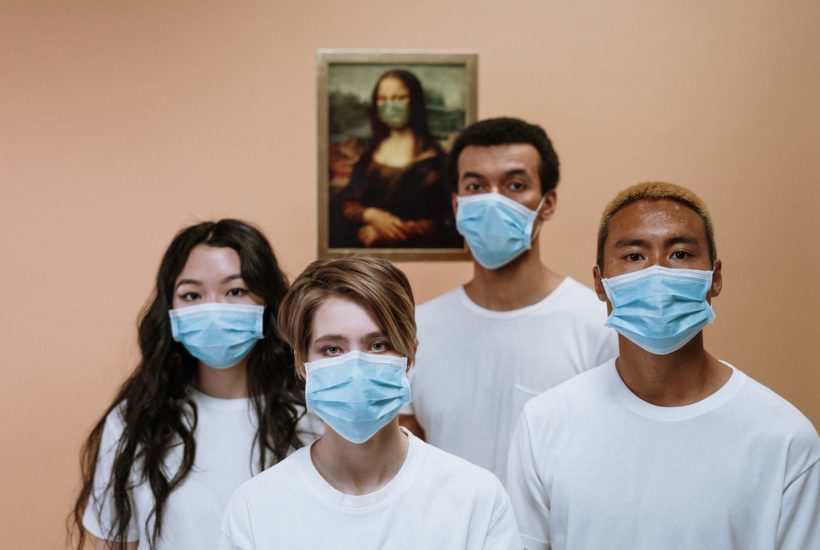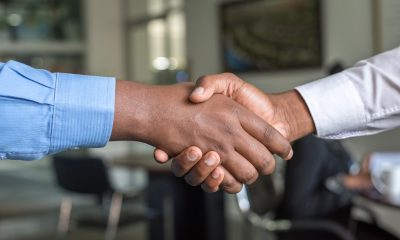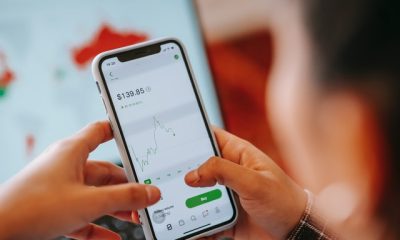Business
How COVID-19 is affecting the global economy, and how the world will recover from it
The coronavirus pandemic lead to the closure of businesses worldwide, which has had a huge impact on economies. The uneven development of the virus across the world gives us somewhat of a window into what our future might be. Helen Mountford argues the virus is a reset button that can open the door for green industries to revamp our energy industry and restart economies in the process.

The coronavirus pandemic has summarily disrupted the lives of the vast majority of the world, locking down over a third of the global population in quarantine or social isolation and closing the shutters on schools, museums, retail giants, and everything in between. Despite the inspiring signs that nature is making a comeback on our human-less streets, COVID 19 is presenting a pretty hopeless future for the rest of the year.
This is perhaps most evident in the disease’s impact on the global economy. The closure of businesses worldwide has had a huge impact on economies, with most major Western nations putting forward billion- and trillion-dollar packages to keep their economies afloat. The issue is not just the lack of business now, but the uncertainty about the future: no one yet knows how long the global shutdown will last, when a vaccine will be developed and distributed, and whether we will ever go back to a “normal” working structure.
Where we are
In the (highly unlikely) case that you’ve not been following any news media for the past week, let’s begin with a brief state of affairs for the virus. Over the past week (up until the 12th of April), 46% and 39% of global new infections are from Europe and the U.S., respectively. This is mostly due to these countries being at different stages of the infection compared to Asian and South American countries. The rise of infections is somewhat mitigated by the implementation of social distancing.
This does mean that Europe and the U.S. are at the beginning of an undetermined period of prevention and control that we have seen China and surrounding Asian countries go through over the past few months. The economic downturn in China resulting from the coronavirus lockdown was the worst the country had seen in 60 years.
What we have seen in these countries is the dual impact of the virus on the lives and livelihoods of the affected populations. Protecting just one will endanger the other — shutting down completely has the potential to crash the economy, while not shutting down enough fails to prevent new infections and thousands of deaths.
Where we’re going
Thankfully, the uneven development of the virus across the world gives us somewhat of a window into what our future might be. While China’s economic downturn was precipitous, their trade surplus after lifting the movement restrictions more than doubles the deficit from their lockdown months.
However, that’s not to say all countries will follow that model. Every social space is different and requires different levels of social distancing to prevent the spread of the virus. China had the technological capabilities to track the spread of the virus with great accuracy, and as a result was able to tactically plan the reopening of public and commercial spaces to great effect. Europe and the U.S. don’t have the same luxury.
That being said, what China’s example can do is help us learn about life after lockdown. The working world is not going back to normal, we can abandon that dream now, but countries that have lifted lockdown are living the closest approximation to normal we’re going to get. That means better understanding the nature of viral transmission and immunity, the potential for digital and remote working solutions, and how to avoid future crippling outbreaks.
How we get there
Knowing where we are and where we’re going are the most important pieces of knowledge to develop a rescue plan for the world’s economy. Thankfully, the world’s most brilliant minds are finally all in collaboration in the pursuit of this one goal, so solutions are coming thick and fast.
Financial theorists with McKinsey & Company have developed a twin framework for getting national economies back on track during the crisis, based on the two questions of when and how. Their argument is that it’s not too soon to think of restarting the economy, seeing as some nations already seem to have succeeded in flattening the curve and slowing the spread of new infection.
In terms of when, there is no definite time frame, but they state it should be as soon as medical facilities are operating under regular capacity rather than with emergency support, and have access to an adequate and continuous flow of medical supplies to continue treatment. As for how, they recommend treating districts and regions sepatraely and assessing each on the potential spread of lockdown and their readiness to deal with it after lifting restrictions. This allows for opening up some parts of countries more essential to economic output than others, providing the health risk is low.
Another solution comes from Helen Mountford from the World Resources Institute, who argues the virus is a reset button that can open the door for green industries to revamp our energy industry and restart economies in the process. Mountford’s argument is that trying to jump back into business, as usual, could lead to a sudden surge in air pollution and climate change that could lead to yet another health crisis in a few years. As for Europe, there is still some debate as to what the economic response to the virus will be.
Conclusion
Uncertainty notwithstanding, there is some hope to cling onto. Between the positive examples of China and other Asian countries recovering from their own lockdowns and the innovative planning of financial experts around the world, there is a future in which the world economy recovers from coronavirus.
—
(Featured image by cottonbro via Pexels)
DISCLAIMER: This article was written by a third party contributor and does not reflect the opinion of Born2Invest, its management, staff or its associates. Please review our disclaimer for more information.
This article may include forward-looking statements. These forward-looking statements generally are identified by the words “believe,” “project,” “estimate,” “become,” “plan,” “will,” and similar expressions. These forward-looking statements involve known and unknown risks as well as uncertainties, including those discussed in the following cautionary statements and elsewhere in this article and on this site. Although the Company may believe that its expectations are based on reasonable assumptions, the actual results that the Company may achieve may differ materially from any forward-looking statements, which reflect the opinions of the management of the Company only as of the date hereof. Additionally, please make sure to read these important disclosures

-

 Business2 weeks ago
Business2 weeks agoAmerica’s Debt Spiral: A $67 Trillion Reckoning Looms by 2035
-

 Markets2 days ago
Markets2 days agoThe Big Beautiful Bill: Market Highs Mask Debt and Divergence
-

 Crowdfunding2 weeks ago
Crowdfunding2 weeks agoTasty Life Raises €700,000 to Expand Pedol Brand and Launch Food-Tech Innovation
-

 Cannabis1 week ago
Cannabis1 week agoCannabis Clubs Approved in Hesse as Youth Interest in Cannabis Declines

























